Standardize care, educate nurses.
- Newborns who’ve experienced long-term in-utero exposure to illegal drugs or prescribed medication may experience withdrawal symptoms after birth.
- Lack of standardized treatment protocols leads to longer NICU stays, prolonged pharmacologic treatment, and increased healthcare costs.
- A team of nurses initiated a combination evidence-based project and quality improvement project to address this need.
Providers diagnose neonatal abstinence syndrome (NAS) in newborns whove sustained prolonged in-utero exposure to illegal drugs or prescribed medications and begin to show signs of withdrawal after birth as a result of abrupt discontinuation of exposure. Drugs that can cause NAS include opioids (heroin, methadone, and buprenorphine), cocaine, selective serotonin reuptake inhibitors (SSRIs), ethanol, marijuana, tobacco, and antipsychotics. According to Asti and colleagues and Bridger, withdrawal symptoms, which develop in 60% to 94% of infants with NAS, vary and depend on the type of drug, maternal last dose amount and time, and infant and mother metabolisms. (See Signs and symptoms.)
A 2020 report by the Academy of American Pediatrics (AAP) found that no established universal protocol exists to effectively treat NAS. Such a protocol could potentially decrease hospital and neonatal intensive care unit (NICU) length of stay, shorten treatment time, and reduce healthcare costs. (See NAS stats.)
Caring for infants and families affected by neonatal abstinence syndrome
NP role in medication-assisted treatment for opioid use disorder
NAS stats
According to Bridger, neonatal abstinence syndrome (NAS) diagnosis incidence has increased by 300% in neonatal intensive care units throughout the United States. Grossman and colleagues found that length of stay in U.S. hospitals averaged 23 days for infants treated for NAS, with a high cost per admission of $90,000 to $93,400. According to Grossman and colleagues and Wachman and colleagues, most of these infants are publicly insured, so Medicaid’s financial burden per year is estimated at between $1.2 billion and $1.5 billion.
The situation
According to Bridger, infants in Texas with NAS have increased by 60% in the past 5 years; one-third of these newborns are in Bexar County (San Antonio, Texas), where we work. Petrie found that Bexar County has the highest percentage of infants with NAS in Texas, with a mean length of stay (LOS) of 27.5 days and, according to Bridger, a mean charge of $146,066.11. The 2020 AAP report found that the increase in NAS has been proportional to increased opioid use and misuse.
To address the lack of standard treatment protocols and comprehensive NAS care, as well as the increase in infants with NAS, a team of nurses initiated a combination evidence-based practice (EBP) and quality improvement (QI) project, which included collecting data (internal evidence) from QI initiatives and medical record documentation to direct ongoing assessment and revision of healthcare protocols and procedures. The team included the project leader (a doctor of nursing practice) who prepared education modules and tests and reviewed patient charts before and after implementation and reviewed data analysis; a NICU educator who provided the project leader with the current NAS policy and resources; and a hospital educator who posted the online NAS education module and posttest and provided the project leader with the analysis of completion and test scores. A neonatologist and medical group secretary supplied the project leader with a list of NAS infants before and after project implementation.
At the Childrens Hospital of San Antonio, if maternal drug use is known, infants are transferred to the neonatal intensive care unit (NICU) for observation and scoring using the Finnegan Neonatal Abstinence Scoring System (FNASS). Treatment begins with nonpharmacologic interventions (NPIs), such as keeping the mother and baby together and allowing the mother to breastfeed if she isnt currently using illegal drugs, doesnt use multiple drugs, and doesnt have HIV. Other NPIs include swaddling, pacifiers, a quiet and darkroom, swings or rockers, cluster care (grouping various care taskssuch as vital signs, feedings, diaper changes, medication administration, and therapiesat the same predetermined intervals), on-demand feedings, skin-to-skin contact, music therapy, massage therapy, and volunteer cuddlers. It is important to note that care of the NAS infant must include teamwork, compassion, and nonjudgment, foster a culture of safety, be family-centered, and include multiple disciplines.
If nonpharmacologic interventions dont lower the FNASS score, pharmacologic interventions are initiated, which can prolong LOS. The most commonly used medication for treating NAS is morphine; however, methadone and buprenorphine also are used. Phenobarbital and clonidine serve as adjuncts. Infants receiving treatment for NAS arent discharged until theyre weaned off medication and observed for 3 to 5 days. According to Malcolm, discharge can occur when the infant has stable vital signs, can tolerate feeds, has suitable weight gain, and can reach a fully alert state in which they respond to social stimuli and are consoled appropriately. Various studies have found no universal standard of care for NAS treatment, so much variability exists in the initiation, management, and pharmacologic weaning.
Signs and symptoms
Signs and symptoms of neonatal abstinence syndrome include the following:
- Central nervous system irritability
- Excessive crying
- Hypertonia
- Sleep disturbances
- Tremors
- GI dysfunction
- Excessive sucking
- Loose or watery stools
- Poor feeding
- Regurgitation
- Metabolic, vasomotor, and respiratory dysfunction
- Fever
- Increased respiratory rate
- Nasal stuffiness
- Mottling
- Sweating
The project
The QI project, which had the overall goal of improving the health and development of infants with NAS, implemented the best evidence-based practice in nonpharmacologic care as the first line of treatment, and then, if necessary, pharmacologic interventions to improve measured outcomes (such as decreased LOS and treatment time). We used the current NAS protocol but added evidence-based nonpharmacologic interventions such as breastfeeding and rooming-in, as well as NAS nurse education, to improve the current protocol and ensure its appropriate use.
In November 2021, all current and new NICU nurses completed a pre-implementation test to measure their skill at identifying NAS symptoms and their knowledge of the NAS protocol. Next, the nurses participated in training and education via a HealthStream module (available for completion from December 15, 2021, to January 15, 2022) and live presentation about NAS symptoms, the FNASS and appropriate scoring, and resources available for nonpharmacologic interventions. The nurses then took a post-test. The project team stocked the NICU with family educational pamphlets about infants with NAS, including home care after discharge.
The outcomes
After the implementation phase, the project leader reviewed the charts (electronic health records and reports printed from computer documentation software, such as HealthStream and Baby Steps) of all patients with NAS 3 months before and 3 months after the project began (August 2021 to January 2022). The project leader reviewed the pre- and post-implementation NAS scores for each patient to assess interobserver reliability ratings for improved scoring accuracy.. After January 31, 2022, the project team generated Excel and SPSS software reports with all data de-identified to protect patient information.
The project goals included the following:
- Reduce LOS by 1 day.
- Decrease pharmacologic treatment by 5%.
- Improve interobserver reliability rating by 10%.
- Achieve nurse post-test scores of 90% or better to indicate improved NAS knowledge.
Clinically significant results include the following:
- LOS reduced by 17.8 days (26.6 days pre-implementation vs. 8.9 days post-implementation). This decreases the cost per admission by $98,793.81 in Texas and $57,258.26 in the United States.
- Pharmacologic treatment decreased by 80% (100% vs 20% pre- and post-implementation).
- Interobserver reliability rating improved by 5%.
- Nurses scored an average of 94% on the post-test (compared with 69.6% pre-implementation).
Implications for practice
Use of a standardized NAS treatment and management protocol, consistent FNASS scoring, improved interobserver reliability ratings, and nurse education can significantly decrease patient LOS, reduce the use of pharmacologic treatment, and decrease hospital costs associated with caring for infants with NAS. Sustainability of this project remains high because it applies a conventional NAS protocol that showed enhanced care significantly decreases healthcare costs. The hospital continues to use the projects HealthStream module for onboarding and annual competencies throughout the region. Other organizations can adapt this project to their individualized needs.
Erica Fonseca is a former bedside nurse at Childrens Hospital of San Antonio and North Central Baptist, in San Antonio, Texas; shes currently a neonatal nurse practitioner with the Pediatrix Medical Group in Houston, Texas. Renea Powell is a distance ABSN coordinator and clinical assistant professor at Louise Herrington School of Nursing, Baylor University in Dallas, Texas.
American Nurse Journal. 2023; 18(6). Doi: 10.51256/ANJ062324
References
Asti L, Magers JS, Keels E, Wispe J, McClead Jr RE. A quality improvement project to reduce length of stay for neonatal abstinence syndrome. Pediatrics. 2015;135(6):
e1494-500. doi:10.1542/peds.2014-1269
Bridger CM. Public health: Responding to the opioid epidemic. City of San Antonio Metropolitan Health District. August 24, 2018. sanantonio.gov/Portals/0/Files/health/News/Presentations/AUG2018_PathwaysToHope.pdf?ver=2018-09-12-153753-757
Coyle MG, Brogly SB, Ahmed MS, Patrick SW, Jones HE. Neonatal abstinence syndrome. Nat Rev Dis Primers. 2018; 4(1):47. doi:10.1038/s41572-018-0045-0
Grossman MR, Lipshaw MJ, Osborn RR, Berkwitt AK. A novel approach to assessing infants with neonatal abstinence syndrome. Hosp Pediatr. 2018;8(1):1-6. doi:10.1542/
hpeds.2017-0128
Kocherlakota P. Neonatal abstinence syndrome. Pediatrics. 2014;134(2):e547-61. doi:10.1542/peds.2013-3524
Maguire DJ, Taylor S, Armstrong K, et al. Long-term outcomes of infants with neonatal abstinence syndrome. Neonatal Netw. 2016;35(5):277-86. doi:10.1891/0730-0832.35.5.277
Malcolm W. Beyond the NICU: Comprehensive Care of the High-Risk Infant. New York, NY: McGraw-Hill; 2014.
Mazurek Melnyk B, Fineout-Overholt E. Evidence-Based Practice in Nursing and Healthcare: A Guide to Best Practice. 4th ed. Philadelphia, PA: LWW; 2018.
McQueen K, Taylor C, Murphy-Oikonen J. Systematic review of newborn feeding method and outcomes related to neonatal abstinence syndrome. J Obstet Gynecol Neonatal Nurs. 2019;48(4):398-407. doi:10.1016/j.jogn.2019.03.004
Patrick SW, Barfield WD, Poindexter BB. Neonatal opioid withdrawal syndrome. Pediatrics. 2020;146(5):e2020029074. doi:10.1542/peds.2020-029074
Patrick SW, Schumacher RE, Horbar JD, et al. Improving care for neonatal abstinence syndrome. Pediatrics. 2016; 137(5)e20153835. doi:10.1542/peds.2015-3835
Petrie B. A cry for baby cuddlers in San Antonio as opioid crisis deepens. Texas Public Radio. February 7, 2019. tpr.org/bioscience-medicine/2019-02-07/a-cry-for-baby-cuddlers-in-san-antonio-as-opioid-crisis-deepens
Wachman EM, Grossman M, Schiff DM, et al. Quality improvement initiative to improve inpatient outcomes for neonatal abstinence syndrome. J Perinatol. 2018;38(8):
1114-22. doi:10.1038/s41372-0180109-8
Key words: neonatal abstinence syndrome, maternal drug use, nonpharmacologic interventions

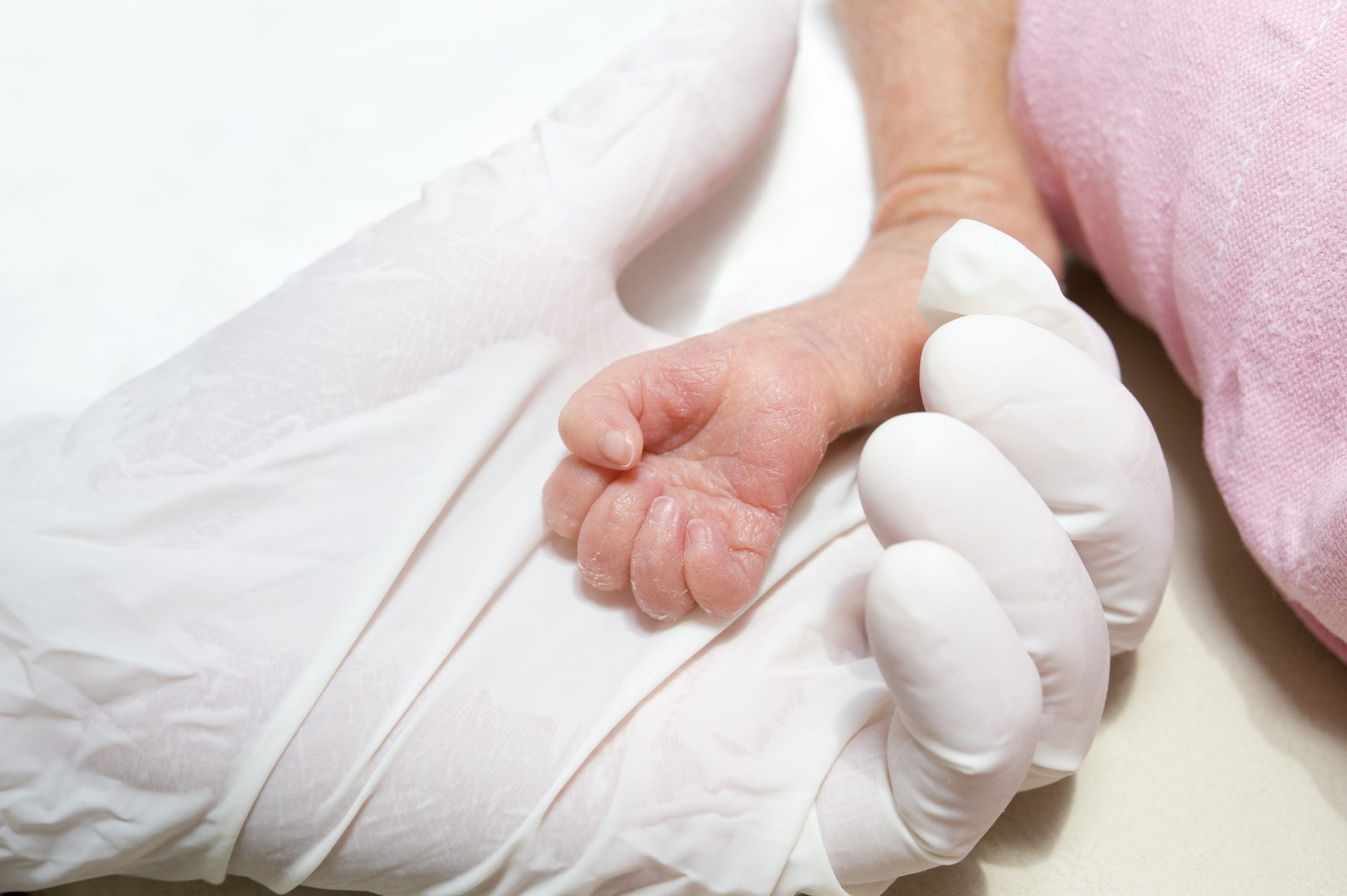








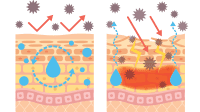


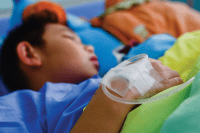

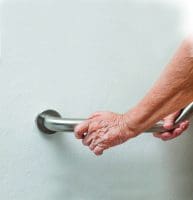
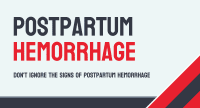

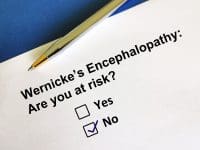
1 Comment. Leave new
This was very informative as a nurse educator for Ascension I try to keep up on any information that might be helpful to our patients and nurses.